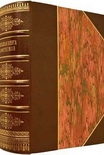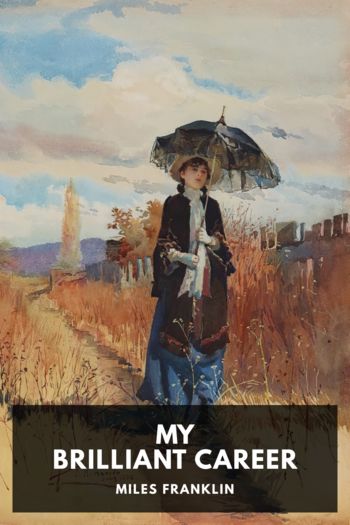Master of His Fate James Tobin (free e books to read online .txt) 📖

- Author: James Tobin
Book online «Master of His Fate James Tobin (free e books to read online .txt) 📖». Author James Tobin
In 1926, he had committed his money to Warm Springs. In 1927 he gave his heart to it. It was an enterprise large enough to absorb all his attention and prodigious energy, and its people—staff and patients alike—now depended on him. He was in very deep.
But now, unlike in 1926, when Anna had watched her father doing everything but much exercise, he stuck to his walking practice.
In the spring of 1928, he worked a lot with a physio named Mary Hudson.
“He came every day,” Hudson told the historian Geoffrey Ward many years later, “and always on time. You knew he was getting ready for something.”
Hudson’s examinations showed how very little muscle mass had been restored below the waist by all of Roosevelt’s exercising. But with the fingers of his left hand gripping Hudson’s arm and his right hand squeezing the handle of his cane, he walked and walked.
How did he do it? Geoffrey Ward asked Hudson.
She tapped her forehead.
“It’s all up here,” she said. “He just decided to do it. He walked on sheer determination. He was ready. It was time.”
PART 4“A TOUCH OF DESTINY”
(FALL 1928–FALL 1932)
Chapter 13“YOU’VE GOT TO PLAY THE GAME”
“I’m telling everyone you are going to Houston without crutches,” Eleanor wrote him, “so mind you stick at it!”
It was the summer of 1928. He was bound for Houston, Texas. At the Democratic National Convention, he would once again nominate Al Smith for president.
And he went without crutches.
For the third time in eight years, thousands of Democrats in a sweltering arena watched him advance to center stage at the Democratic National Convention. In 1920 in San Francisco he had been young, quick, and strong. In 1924 at Madison Square Garden he had been thin, shaky, and slow. Now, in 1928, the delegates saw yet another version of Franklin Roosevelt. He was still slow and obviously lame. But he was walking more confidently than he had four years earlier, “proud despite years of suffering,” as one observer put it. The crutches were gone. He gripped a cane with his right hand and his son Elliott’s arm with his left. And again he delivered a speech that provoked at least as much admiration for Roosevelt himself as it did for Governor Smith. “This is a civilized man,” a journalist wrote. “For a moment we are lifted up.”
This time Smith won his party’s nomination easily.
His opponent in the national campaign would be the Republican Herbert Hoover, a much-admired figure who had made a small fortune as an engineer consulting with mining corporations around the world. Then he had supervised the massive effort to help refugees displaced in World War I. He’d gone to Washington as President Coolidge’s secretary of commerce. In 1928, he was aiming for the White House—a businessman running for president just when a great many Americans were in thrall to business. Thanks to a great surge in manufacturing fueled by the spread of the automobile and easy credit for consumers, there was a sense in the air that permanent prosperity had arrived at last. Hoover was its herald. He appealed to people who were already comfortable or hoped to be very soon.
Against Hoover, Al Smith was summoning the loyalty of those not included in the great ascendancy of the middle class, especially the masses of Catholic immigrants in the cities who wanted Prohibition overturned. If Smith could bring those new Americans into a coalition with the old Democratic stronghold of the South, he had a shot against Hoover. But even at the start, to anyone in the know, that outcome looked like a long shot.
As the convention closed, FDR was expecting to play a big role in Smith’s campaign, perhaps as director of publicity. But he soon realized that Al’s top lieutenants meant to use him solely as “window dressing.” One of these was Belle Moskowitz, the campaign manager, a brilliant political tactician who brought her knitting to meetings of Smith’s inner circle. She had always regarded FDR as a “stuffed shirt”—a pompous phony—and a threat to her boss. Smith’s other key aide was Joseph Proskauer, a hard-nosed lawyer and judge who resented FDR for failing to give him credit for writing parts of Roosevelt’s big convention speech in 1924. Moskowitz and Proskauer stuck FDR on a couple of committees. When he wanted to talk with Al in person, they shooed him away.
So now, as Smith made one risky decision after another, FDR could only watch from a distance. FDR thought Al should soft-pedal his opposition to Prohibition. Instead, Al played it up. FDR urged Smith to campaign against government by and for the wealthy classes, and to build bridges to “dry” Protestant voters in the South. So what did Smith do? When he had to pick the new national chairman of the Democratic Party, he chose his friend John J. Raskob, a corporate executive who was (a) one of the richest men in America, (b) a conservative Catholic who was a friend of the pope, and (c) even “wetter” than Al.
“A number of southern states are in open revolt” against Smith, FDR wrote Van Lear Black. “Frankly, the campaign is working out in a way which I, personally, would not have followed and Smith is burning his bridges behind him. It is a situation in which you and I can find little room for very active work.”
FDR couldn’t help but see a personal advantage. Day by day, it seemed ever more likely that Smith was going to lose, probably in a landslide. He would no longer be governor of New York, and he would never again be nominated for president. That meant that when Democrats looked for presidential nominees in later years, Al Smith would be out of the running.
“We shall be in a more advantageous position in the long run,” FDR hinted to Black.
All he had to





Comments (0)